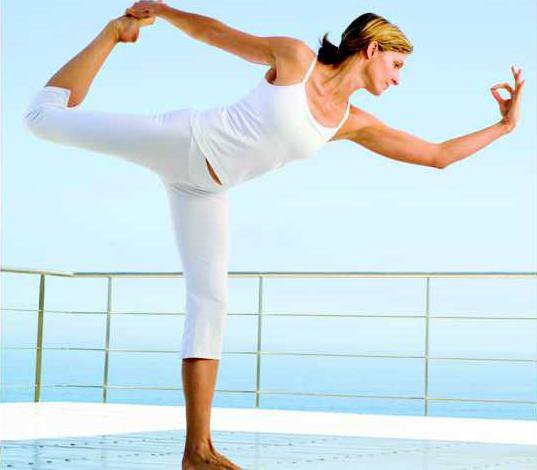I’ve learned during the past year that running several times a week is great for the heart and the muscle tone in my legs, but it doesn’t address all parts of my body.
While my mileage increased, I noticed my flexibility went the opposite direction. A good trainer may say that I wasn’t stretching enough — a claim I won’t dispute — but I realized around November that I needed an alternative activity to pounding the pavement.
I’ve tried suspension-based TRX classes, which can function either as resistance training or cardio activity, but I found that the movements in class were too unpredictable to balance with a steadfast running regimen.
It was too hard to keep to my long Wednesday runs after Tuesday evening classes filled with squats and lunges, so I abandoned that activity once my fall training picked up.
After finishing my November half, however, I noticed that my gym offered yogalates classes at 6:30 a.m. — early enough that even my hectic work schedule shouldn’t interfere!
For those who don’t know, yogalates is a combination of yoga and Pilates, a system of core-centered exercises developed by Joseph Pilates in 1965, according to WebMD.com.
I’ve done yoga several times before and always found it enjoyable, but I had some reservations about the “-lates” part of the class, since I’ve never been fond of crunches, sit-ups or any activity that felt like a stomach ache.
But I also knew that my lack of comfort working my core meant that my abs could use a good routine or two.
When I took my first class, I was surprised to find the movements seemed to offer only a minor challenge. As soon as I began thinking, “Ouch, this hurts,” or “I can’t do this anymore,” it was time to move on to another focus area.
“I love this,” I thought, flowing through the sequence. “It’s hard enough that I’m venturing outside of my comfort zone, but I know completing the series is within reach.”
That feeling has drawn me back to the class several times. While I can’t always make both classes each week, I try to attend at least one.
Instead of calling things “crunches,” my instructor tells us to do “little pulses.” I know it’s a matter of linguistics and that my body is doing the same movement, but those little pulses seem much more enjoyable than crunches.
My instructor also varies the classes enough that I am familiar with most motions, but then she throws in new twists that make me realize just how strong my body really is.
WebMD.com says people of varying fitness levels report experiencing improvements in range of motion, flexibility, circulation, posture and abdominal strength after taking up the practice, and I definitely have experienced most of these benefits.
Another really cool aspect is that by isolating movements and realizing where my control comes from, I have a much better understanding of how my body functions and where balance comes from — lessons that flew over my head during what little classroom exposure I had to anatomy and physiology.
During late February, I even had the misfortune of taking two weeks off from yogalates. Upon my return, even familiar exercises felt like a huge challenge. While some people might find such a struggle to be a turn off, I felt invigorated; it meant that my attendance had made enough of a difference that I noticed it!
This week, I’m grateful to be getting back into the exercise’s fluid movements in between easy runs. Now that I’m not eyeing a particular race, I plan to run enough to maintain my form and endurance, but I also have more freedom to pick up some other activities.
I think I’ll revisit TRX and maybe try my hand at spin, too.
Break gives chance to try new exercise
Running


Sign up for our e-newsletters